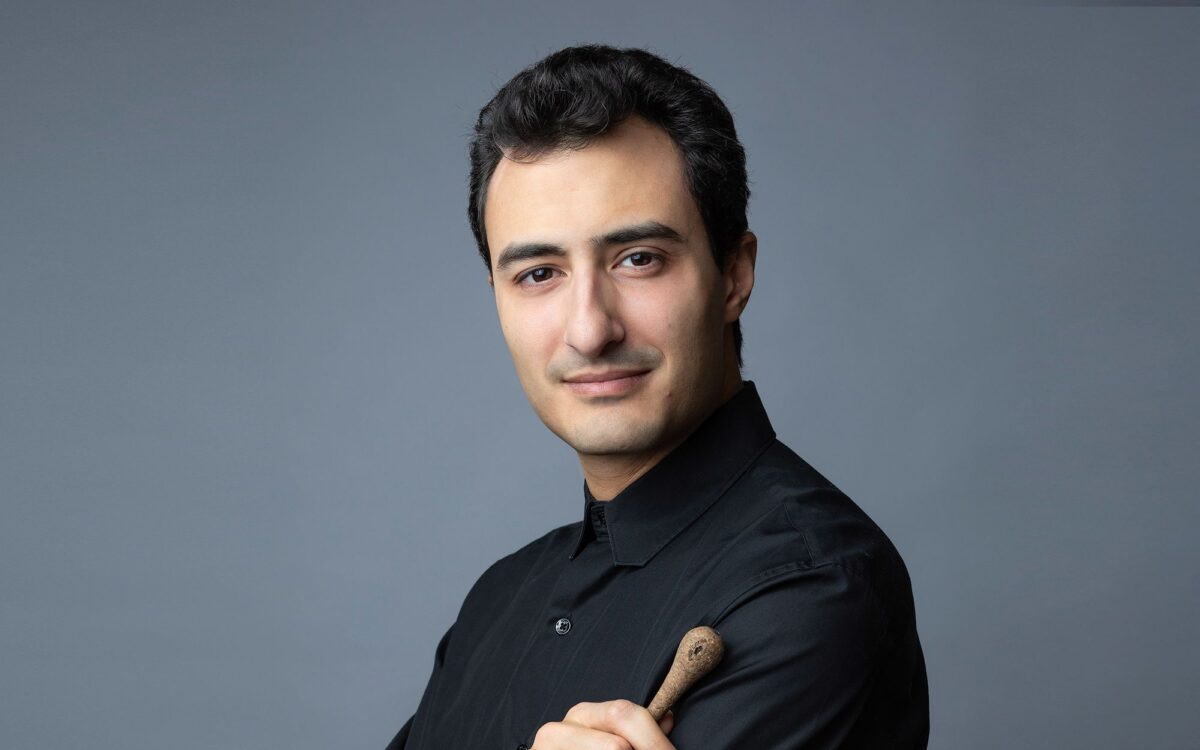Dawn in the Field (1949)
Composition and premiere: Svetlanov composed Dawn in the Field in 1949 while still a student at the Gnesin Institute in Moscow. First BSO and Tanglewood performance: August 16, 2024, Samy Rachid conducting.
Like Serge Koussevitzky, Yevgeny Svetlanov possessed many talents beyond conducting, the occupation for which he is best known. The son of two Bolshoi Theater singers, he grew up surrounded by musical professionals and was already an accomplished pianist and composer before becoming one of the most successful, visible, and active Soviet conductors of the post-World War II period. Like so many important Soviet musical figures, he first studied piano and composition at the Gnesin Institute in Moscow, then continued at the Moscow Conservatory, where the distinguished composer Yuri Shaporin and conductor Alexander Gauk were his mentors. He also developed a fondness for the music of composer and Conservatory professor Nikolai Miaskovsky (1881-1950), and would later record all 27 of Miaskovsky’s symphonies with the USSR State Symphony Orchestra.
Svetlanov’s conducting career began early, in 1955 at the Bolshoi Theater, where he was appointed principal conductor in 1962. In 1965, he became principal conductor of the most prestigious Soviet orchestra, the USSR State Symphony Orchestra (later renamed as the Russian State Symphony after the collapse of the USSR in 1991), remaining there until 2000, when he was fired by the Russian Minister of Culture for spending too much time conducting abroad. Because of his enormous stature, he was given the rare privilege of working abroad even during the Soviet period; he was appointed as principal conductor at the London Symphony Orchestra in 1979 and made numerous appearances around Europe and in the United States. From the beginning, Svetlanov focused on the Russian repertoire, and told Gauk he wanted to “to revive works that have unjustly fallen into oblivion.” He was a devoted champion of the music of Russian composer and pianist Nikolai Medtner (1880-1951), neglected because he emigrated from Russia in 1921. But he also conducted important performances in Russia of music by Messiaen, Schoenberg (A Survivor from Warsaw), Stravinsky, Mahler, Bartók, and Webern.
As a composer, Svetlanov created his first compositions while still a student at Gnesin Institute. He eventually wrote in many different genres: symphonic poems, symphony, piano concerto, piano solo music, sonatas, and more than 50 songs. By his own admission, Svetlanov was a “conservative” composer. “I love sweeping melodies and clear rich, polyphonic harmonies, but also the contrary, illustrated by Mahler’s work, my favorite composer throughout my life. My rhythmic pattern, however, is simple and is governed by the melody.”
Completed in 1949, the charming miniature “Symphonic Picture” Dawn in the Field is one of Svetlanov’s better-known works. Svetlanov uses the established form of a folk-song theme with variations, practiced by many generations of Russian composers beginning with Mikhail Glinka’s Kamarinskaya (1848) and extending to Balakirev and Tchaikovsky. The composer paints a colorful orchestral scene of dawn in summertime in the Russian countryside. His model is clearly a similar pictorial musical setting of about the same length by Modest Mussorgsky, Dawn on the Moscow River, the prelude to his opera Khovanshchina—but without the bells.
Opening in F minor with an accompaniment of string tremolo, perhaps reminiscent of the sound of balalaikas, the clarinet makes the first soft statement of the lovely, slow, lyrical theme, then taken up the oboe and violins. The volume and orchestral texture gradually build until the theme appears in the horn, and finally in all the brass, representing the bright arrival of the sun. From that climax the intensity gradually subsides, until the clarinet returns with the theme, as at the beginning, with string tremolo, in affirmative A-flat major. A youthful appreciation of the joys of rural life celebrated in official Soviet culture, Dawn in the Field displays a subtle command of orchestral color in the grand Russian tradition of Rimsky-Korsakov, Khachaturian, and Sviridov.
HARLOW ROBINSON
Harlow Robinson is an author, lecturer, and Matthews Distinguished University Professor of History, Emeritus, at Northeastern University. His books include Sergei Prokofiev: A Biography and Russians in Hollywood, Hollywood’s Russians. His essays and reviews have appeared in the Boston Globe, New York Times, Los Angeles Times, Cineaste, and Opera News, and he has written program notes for the Boston Symphony Orchestra, Los Angeles Philharmonic, New York Philharmonic, and Metropolitan Opera.

